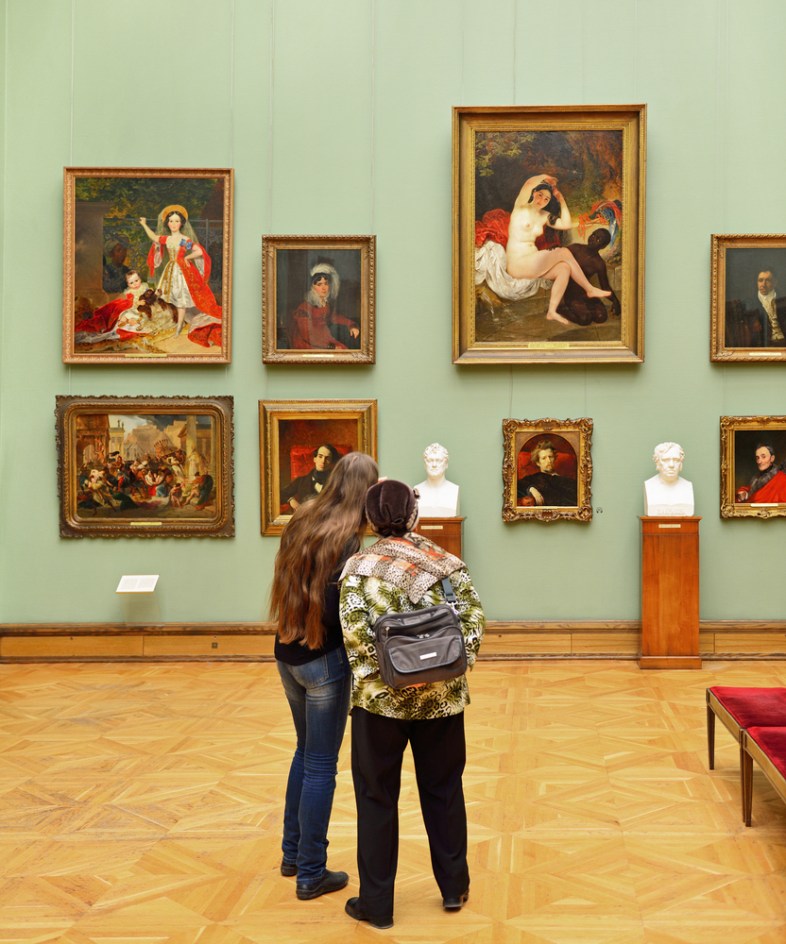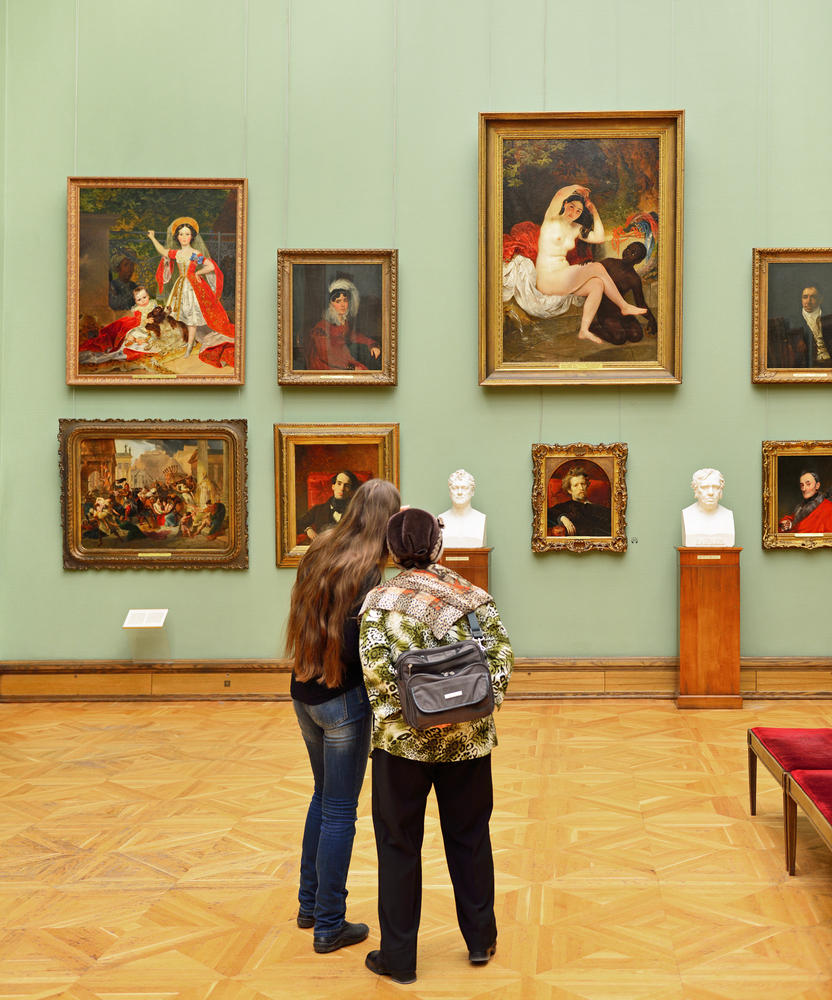Making Sense Of Images
I took a modern art history class in college in which I learned the least about images, even if I did learn some good things.

I remember looking through an art magazine years many ago. It was 1998 and I’d just finished my doctorate in rhetoric. So I’m flipping through the magazine and thinking, This is terrible! I can’t read a word of this. And when I can, it’s drivel. My friend — a well-heeled filmmaker and image maker — leans over and says, No, no, you’re looking at it all wrong. Let me show you. He grabs the magazine and starts flipping wildly through it. Ah, man, look at that! Gorgeous! Then, turning pages with flippant determination: Nah, whatever, blech, blech, hmm, O, there! Nasty!
I looked first and foremost for words and the things words are especially good at — concepts and ideas. But he looked first and foremost at the images and the experience he had with them. Yes! Ahhhhh! Eeesh! No way. Dull. Dull. Eh.
And that’s when I learned, in a flash, that I didn’t know how to read images. Sure, I’d seen plenty of art. And while my knowledge was by no means extensive, I had clearly delineated opinions about this and that (I was a recent doctoral student, after all; we have to have opinions). But the fact is I was blind. Images were everywhere and I had no real way to make sense of them.
When I looked back over my extensive years of upper education, I had never been offered a class in how to make sense of images. There were film classes in rhetoric but they were not about images at all. They were about pornography, power, gender, psychoanalysis. Images were always considered symptoms of something else, something nobler and more important: big ideas, ideology, patriarchy. The images themselves, while no doubt enjoyed, were not themselves an event, were not themselves sites of power, were not themselves ways of going in the world. They were examples of more important ways of going.
I took a modern art history class in college in which I learned the least about images, even if I did learn some good things. The class was a survey in which we were shown image after image and given name after name, movement after movement, coupled with some historical reduction of that movement’s philosophy. We were being taught a topology, a system of classification. We did not spend one moment actually reckoning images, learning to see, to feel, to process or articulate what was happening directly in front of us. Knowledge about the images was laid over the images, keeping us from ever seeing anything at all.
There have been a few moments that stood out along the way. John Berger’s Ways of Seeing was a revelation. He taught me that seeing is not neutral, that an act we assume to be mechanical and neutral — the eyes just see — is in fact run through with ideology.
But I was taught the book in the context of Marxist-feminist critique. And while ideology critique is an important way to see the world, it has a tendency to look over the head of the image all together in order to see what’s behind it. The image once again becomes a symptom of a societal disease that’s out there. You don’t really see the image; you see the system that produced the image.
Then there was the opening of Michel Foucault’s The Order of Things in which he performs this incredible, acrobatic reading of Velasquez’s “Las Meninas.” At the time, I found it baffling and exhilarating. He maps an elaborate scene of seeing and being seen, an entire economy of social seeing. And while he sees the image in terms of a vaster episteme, this was not ideology critique. This mode of seeing he finds in the image is the very mode of seeing that Foucault finds operating elsewhere. The painting is not a symptom but is part and parcel; the politics do not happen elsewhere. They happen in, with, and of the painting. The image itself was a site of knowledge.
For me, the most important writing I encountered about seeing was Maurice Merleau-Ponty’s phenomenology and, in particular, his essay, “Cézanne’s Doubt.” While the essay seems to be biographical — there are lots of quotes from the painter and his friends as well as lots of facts about his life — the biography does not determine the work. The last paragraph of the essay begins, “Thus it is true both that the life of an author can teach us nothing and that — if we know how to interpret it — we can find everything in it, since it opens onto his work.” The painter doesn’t as much create the work as the work creates the painter. Or, rather, they are of the same engine, the same necessity.
Merleau-Ponty has no desire to look over the head of the painting to find the meaning. He doesn’t need to understand the culture at large or the mind-set of Cézanne the man. He can find all those things in the paintings, not because the paintings are symptoms of something else but because they are worlds themselves — worlds we live in, worlds Cézanne lives in. Because, for Merleau-Ponty, image making is not mimetic but digestive: it’s a way of processing the world, taking it in and shitting it out.
Looking at Cézanne’s paintings, Merleau-Ponty finds a way of seeing the world — as well as a way of knowing the world:
The composition of Cezanne’s palette leads one to suppose that he had another aim. Instead of the seven colors of the spectrum, one finds eighteen colors—six reds, five yellows, three blues, three greens, and black. The use of warm colors and black shows that Cezanne wants to represent the object, to find it again behind the atmosphere. Likewise, he does not, break up the tone; rather, he replaces this technique with graduated colors, a progression of chromatic nuances across the object, a modulation of colors which stays close to the object’s form and to the light it receives.
Look at where Merleau-Ponty is looking: at the image. At the colors, the composition, the play of light and form and hue. He begins with the image and sees where it takes him, what it has to teach him.
And it is here that he discovers more than just ideas, more than just biography: this is where he discovers an entire onto-cosmology, the very manner in which things are and come into the world. Not behind the painting, not in biography, but in the paintings. Just as there is no outline to predetermine the form of Cézanne’s pears, there is no outline to pre-determine Merleau-Ponty’s reading of Cézanne’s paintings. Things appear as they will. Their limits emerge and flourish in the middle of a thing!
Doing away with exact contours in certain cases, giving color priority over the outline— these obviously mean different things for Cézanne and for the impressionists. The object is no longer covered by reflections and lost in its relationships to the atmosphere and other objects: it seems subtly illuminated from within, light emanates from it, and the result is an impression of solidity and material substance.
Merleau-Ponty sees Cézanne seeing. And this seeing is literally a perspective, a point of view, as rich and articulate as any philosophy, ethics, cosmology.
And so I began to understand that images offered a way of making sense of things. An image is a distribution of the world, a way of taking up things, ideas, affect, color, mood, history, desire, metabolizing it and spewing it out. Every image declares: Here! This! See my seeing! ![]()


